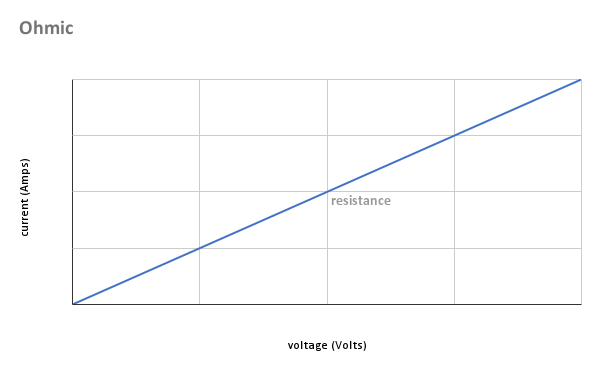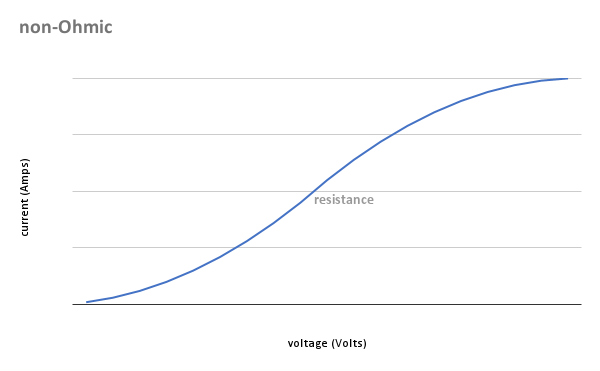Back to: Fundamentals
Now that you have learned about voltage, current and resistance, I want you to not think about these separately. These, as well as others that you will learn about are linked, rather than independent parameters. A German physicist, called Georg Simon Ohm realised this, in what we call Ohm’s law. He discovered that there is a direct proportionality between the voltage across a conductor and the current that flows through it. There are many rules in electronics but this is one of the most important. There are things that you may learn about and never use, Ohm’s law is not one of them! If you want to calculate the resistor required in a circuit and you know the voltage and current, you can use Ohm’s law to calculate the required value.
Ohms law can be written as a formula, which can be arranged in three different ways, according to what needs to be calculated.
To calculate voltage: V = IR
To calculate current: I = V/R
To calculate resistance: R = V/I
Graph 1 shows Ohm’s law plotted as a line graph, with voltage against current and the resulting line being the resistance. Materials that follow Ohm’s law will form a straight line. We call these materials Ohmic. If you double the voltage across a conductor, the current will double.
There is a component that you will learn about that is ubiquitous in electronics – the resistor. This is an Ohmic component that is used to add a specific resistance into part of a circuit.

There are some materials that do not obey Ohm’s law, these are said to be non-ohmic. Graph 2 shows an example, forming an s-curve. Many other non-linear shapes can be plotted for other non-Ohmic materials.

Incandescent lights are an example of a non-Ohmic component. Its resistance changes as the temperature changes. As you learn about different components you will see that being non-Ohmic can be very useful. One in particular is called a thermistor. These can be used as temperature sensors.